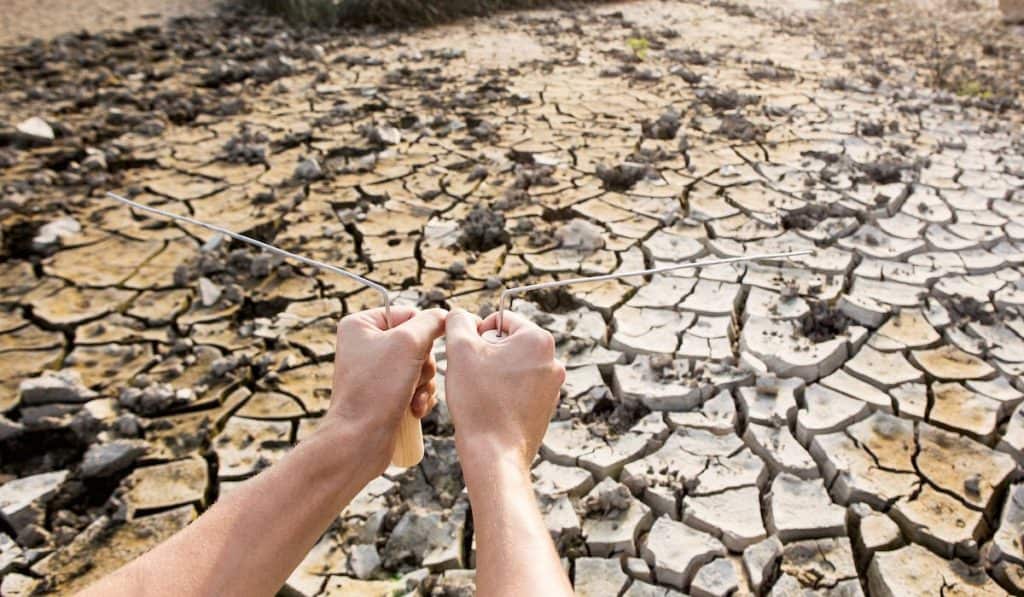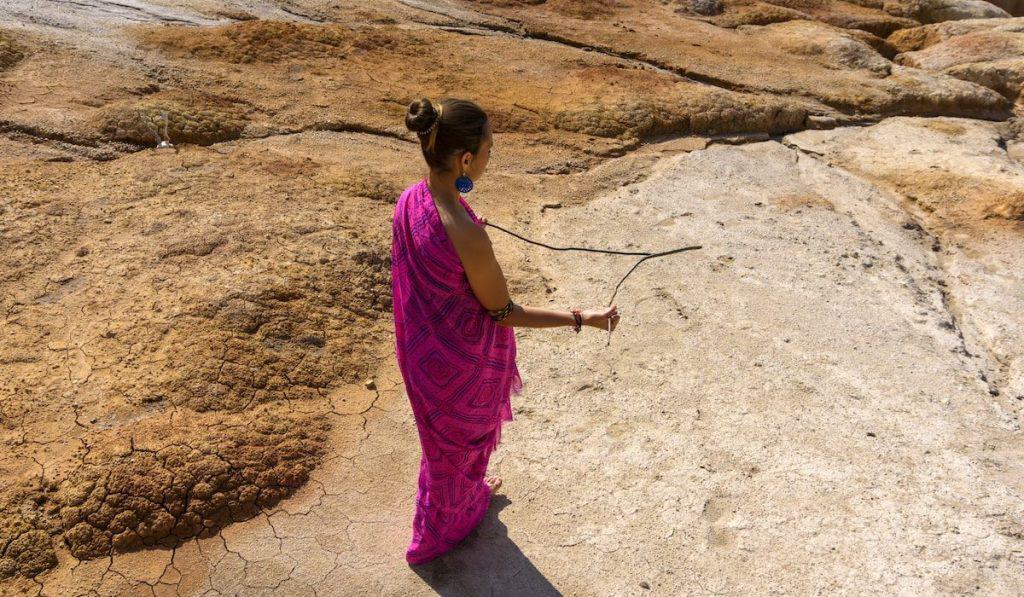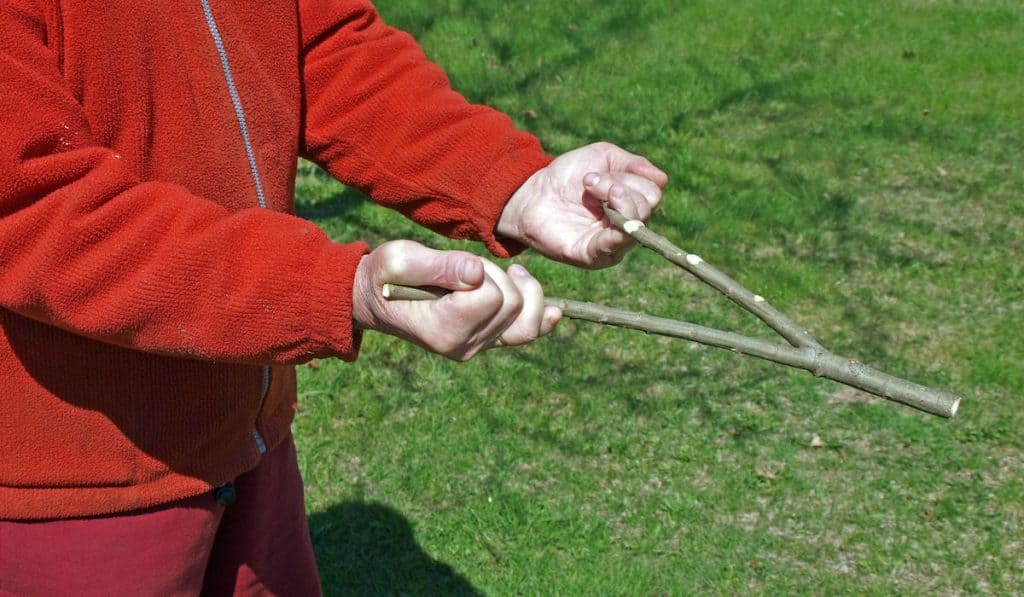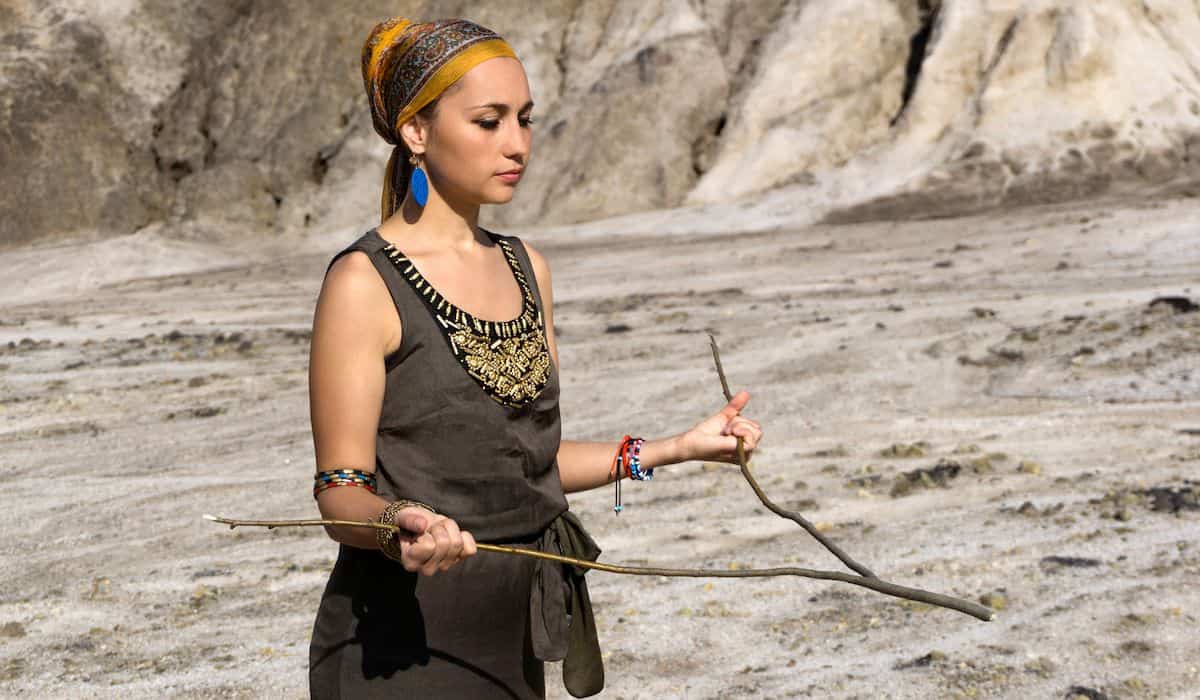23 million cubic kilometers of groundwater exists on Earth, enough to cover the ground surface of Earth with 180 meters of water. Getting to that water, however, has always been a conundrum for civilizations throughout history.
Since the first humans walked the Earth, they have been looking for reliable sources of water. The demand led to a craft development that focused on finding the essential resource: dowsing.
What is Dowsing?
The term “dowsing” generally defines the art of divining the location of water. Also known as water divining or water witching, dowsing exists in the historical record as far back as 8,000 years ago.
Dowsing practicers also use their craft to locate precious minerals, gas, and metals. There are accounts of dowsing being used to locate people, archeological sites, and modern plumbing pipes. It’s even used to find unmarked graves.

Think of dowsing as the predecessor to the modern metal detector with the added perk of detecting water and other useful resources. Dowsing essentially works as a locating method without the need for electronics, bells, or whistles.
The History of Dowsing
Dowsing in Ancient History
Dowsing predates modern water-detecting and metal-detecting technology by thousands of years. However, the practice maintains a strong presence of use across the globe today.
The story of dowsing first enters the historical record about 8,000 years ago in the Tassili Caves of northern Africa. Cave paintings depict ancient Africans using a forked diving rod to locate water. Similar images exist in the artwork of ancient Egypt, China, and the Celts.
Dowsing as it is today likely developed in Germany and Eastern Europe. German miners of the past were dowsing for gold and other precious metals, as well as the traditional divining for water.
Until around the 16th Century, dowsing was a common and relatively safe folk-practice of Europe and Asia. However, by the mid-1500s, the rise of protestant beliefs from Martin Luther began to target the folk-beliefs of the German people.

Folk beliefs, by and large, became viewed as heretical by the leaders of the protestant reformation. German protestants were especially prone to label folk beliefs as magic. The German dowsers found themselves identified as diabolic witches breaking Biblical law.
As the 16th Century wore on, water diving and dowsing for precious metals entered a decline, though the practice remains quietly preserved in rural areas of what is now the United Kingdom.
German miners had brought the refined practice of dowsing for precious metals to England. Silver mines in Wales, Devon, and Cumbria flourished with the aid of dowsing. Dowsers did not face the same level of prosecution in England as they did in Germany.
The practice of dowsing remains popular in England today. The practice saw a surprising rise in popularity. The United Kingdom’s main water supply companies use the services of dowsers periodically.
Dowsing in Modern History
Dowsing has experienced a strangely diverse modern history.
The American West saw many oil barons and ranchers reach out for help locating oil or water, Romie Nunn of Wyoming helped many ranchers find water in the arid deserts and mountains of the western state. In Maine, Henry Gross searched for groundwater and objects in the 1950s.

Even militaries found applications for dowsing. In the Vietnam War, dowsers used their skills to locate weapons and tunnels, while the Norwegian Army applied the craft for locating individuals lost in an avalanche in the 1980s.
Across the world, dowsers still practice their craft. American dowsers look for water in the Texas desert, while European diviners seek water for ranchers and businesses alike.
Though religion and science have challenged dowsing, it remains a popular folk-practice to this day.
Is Dowsing Science or Magic?
Medieval Christianity labeled dowsing of any sort, whether for water divining or other purposes, as heretical and satanic magic. Modern science isn’t a fan of the practice either, labeling it as pseudo-science at its best, and pure imagination at its worst.
Pseudo-sciences are practices that have evidence that supports their claim but aren’t compatible with the scientific process of hypothesis and questioning evidence. Magic, of course, has no basis in science. So which is dowsing, exactly?
Technically speaking, dowsing falls best into the pseudoscience category. Plenty of case evidence exists indicating that dowsing can work, but there are not enough studies with proven efficacy and consistent application to make the practice true science.
In general, science hubs like the United States Geological Survey Department consider dowsing for any material as pseudoscience. They do not recommend or confirm the use of such methods for finding resources.

Notable scientific opinions identify dowsing as a product of the ideomotor phenomenon, otherwise known as an unconscious muscular movement. This line of thought considers dowsing as the result of the unconscious mind manipulating the body’s actions.
But, there are scientific case studies that indicate some grounding in dowsing ability.
The late 20th Century saw such cases as the Betz Study of 1990 and a German study carried out in Sri Lanka saw the success of dowsers in action. The German study was particularly effective, with dowsers having success with over 600 drilled wells located by dowsers.
Remarkably, a geologist named Ziggy Lubieniecki used dowsing to locate gold ore in Australia successfully. The mine went on to make $650 million, and Lubieniecki received the Association of Mining and Exploration Companies’ prestigious Prospector Award as a result of his work.
The jury is still out on the scientific and supernatural origins of dowsing. Ultimately, the nature of dowsing remains elusive and contested to this day.
The Applications of Dowsing
As previously mentioned, dowsing has been historically used to locate underground water sources, mineral deposits, and other natural resources.
However, dowsing has been applied to the search for many other types of objects. There are three common variations of dowsing, each with names that vary based on the region of their use.
Finding Water: “Water Witching”
Water witching, water finding, and water dowsing are the proto-typical form of dowsing most people are familiar with. Water dowsers intend to locate water. The application of water dowsing has been used to locate burst pipes, drilling locations for wells, and even the paths of underwater springs.
Finding Petroleum: “Doodlebugging”
Doodlebugging began growing in popularity in the United States around the mid-20th Century. Dowsers use traditional dowsing techniques to locate oil deposits underground. The term is now used to identify individuals who use seismic mapping to locate oil deposits nowadays.
Finding Answers: “Divining”
While dowsing typically locates physical materials, like water or minerals, it has been applied as a fortune-telling device. Typically, this method uses dowsing equipment to detect “yes” or “no” answers based on the direction the equipment swings when held.
The Dowsing Hobby
Dowsing has grown in popularity as a hobby in the last few decades. Centuries ago, dowsing was largely a family business handed down as both a cultural and folkloric belief as well as a valid livelihood.
Nowadays, dowsing holds a unique place in society, where some folks do practice dowsing for money, while others use it as an escape and exploration of the world.
Practitioners hone their skills while exploring the outdoors.
Who Can Dowse?
Anyone can dowse. Some people in the dowsing community argue that more spiritual people are capable of dowsing better than others and that those who do not “believe” in dowsing fail to dowse because of their beliefs.
It’s important to note that dowsing can be a fairly active hobby. Many dowsers walk miles to find their target object, all while holding their dowsing rods in front of their body.
It can be quite the workout to hold even a light stick out for an hour at a time or longer!
Those wishing to become dowsers should approach the process with a grain of salt and an open mind. New things are always a challenge, but like any new hobby, dowsing takes practice to make perfect.
Dowsing Equipment and Techniques
The popularity of dowsing owes its thanks in large part to the simplicity of the practice. The only equipment technically necessary is dowsing rods, and experienced dowsers may not even need those! Of course, for outdoor dowsing, appropriate clothing and shoes are necessary.
In terms of dowsing rods, there are two main types to choose from, y-shaped and l-shaped rods.
Y-Shaped Rods
Y-shaped rods are thought to be the older type of the two. Y-shaped rods are traditionally made from freshly cut tree limbs that are naturally in the shape of a forked “y.”
Hazelwood was the historical tree of choice in Europe, while witch-hazel and willow remain popular in the U.S.

Y-shaped rods are held by both ends of the “y,” with the stem pointing out and away from the body.
Dowsers then walk the ground near their suspected target, whether it be a person, water, or another object.
When the stem of the “y” dips, vibrates or elicits another noticeable change, the dowser stops to investigate.
L-Shaped Rods
L-shaped rods are generally made of metal, and dowsers choose to use one or two of them at a time.
They can be made from household items like clothes hangers, though many practitioners purchase specially designed rods made for dowsing.

L-shaped rods are held in front of the dowser’s body, one in each hand. The dowser walks the area of the object’s suspected location, just as they would with a “y” rod.
Typically, dowsers indicate they have found something when the two rods cross each other, making an “x” shape, or when they have swung to opposite directions of each other. Variations on the “l” rod are completely straight.
Getting Started with Dowsing
From an outsider’s perspective, dowsing looks like a hobby easily picked up. In some ways, it is. Dowsing requires minimal equipment and monetary investment, making it an economical hobby to start. But, knowing where and how to get going is another matter.
There are many videos on the internet and books on shelves that offer suggestions and lessons on how to properly dowse for water, minerals, or other objects.
Books like Dowsing for Beginners: How to Find Water, Wealth ; Lost Objects, by Richard Webster and Divining Hand by Christopher Bird, are popular choices for individuals starting with dowsing. Countless online videos share “how-to” tutorials and demonstrations for visual learners as well.
To learn from a dowser with practical experience, new hobbyists should consider finding a local dowsing society or club to work with. If there isn’t a society nearby, hobbyists may find help by emailing the group nearest to them for help.
The dowsing community network has resources and techniques enhanced by their own experience. Working with a fellow practitioner can also help hobbyists find a comfortable place to learn and grow into their new hobby.
Notable Dowsing Societies
- The British Society of Dowsers, founded in 1933 by Colonel A.H. Bell.
- The American Society of Dowsers, founded in 1961 in the state of Vermont.
- The Canadian Society of Dowsers, founded in 1988.
The hobby of dowsing has a rich and unique history. Hobbyists who choose to start a dowsing journey join the thousands of men and women who have carried on an ancient tradition into the modern world.




